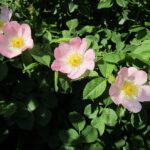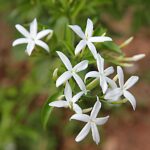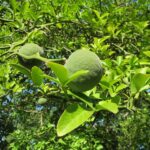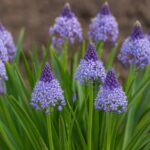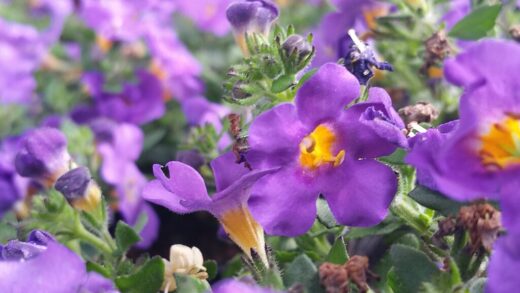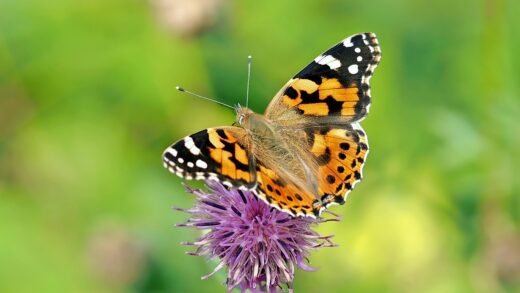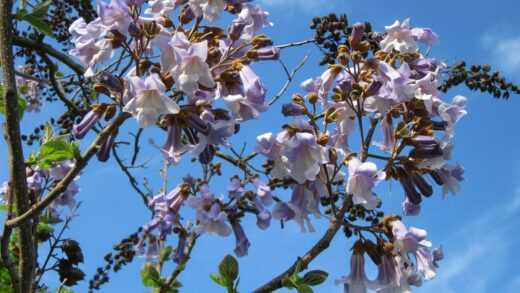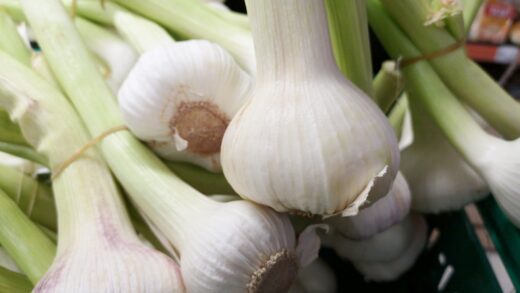Understanding the nuanced water requirements of love-in-a-mist is fundamental to its successful cultivation, as this is an area where gardeners can easily go wrong. Originating from the relatively dry climates of the Mediterranean region, this plant has evolved to be quite resilient and is far more tolerant of dry conditions than it is of excessive moisture. The most common mistake is overwatering, which can lead to a host of problems, including root rot and fungal diseases. Therefore, the goal of a proper irrigation strategy is to provide sufficient moisture to support healthy growth and flowering, particularly during key developmental stages, while always ensuring the soil does not become waterlogged. A mindful approach that observes the plant and the soil conditions will yield far better results than a rigid, one-size-fits-all watering schedule.
The plant’s need for water is at its most critical during the germination and seedling stages. After the seeds are sown, the top layer of soil must be kept consistently moist to signal the seeds to break dormancy and sprout. This does not mean the soil should be soaking wet, but rather that it should never be allowed to completely dry out and form a hard crust, which can prevent the delicate seedlings from emerging. Using a fine spray to water the seedbed helps to provide gentle moisture without dislodging the seeds. This careful attention to moisture levels in the first few weeks is a crucial investment in establishing a healthy and uniform stand of plants.
As the seedlings grow and begin to develop a more substantial root system, their need for frequent watering diminishes, but they still require a steady supply of moisture to fuel their rapid development. During this establishment phase, which lasts for several weeks after germination, it is important to water the plants deeply whenever the top inch or two of soil becomes dry. Deep watering encourages the roots to grow further down into the soil in search of moisture, which builds a more resilient and drought-tolerant plant in the long run. Shallow, frequent watering, in contrast, encourages a shallow root system that is much more vulnerable to drying out during hot spells.
Once love-in-a-mist plants are mature and have reached their full size, they exhibit a remarkable degree of drought tolerance. Their finely divided, feathery foliage is an adaptation that helps to reduce water loss through transpiration, allowing them to conserve moisture effectively. At this stage, you should significantly reduce the frequency of your watering. In many temperate climates with regular rainfall, mature plants may require very little, if any, supplemental irrigation. The best guide is always the soil itself; only provide a deep soaking when the soil is dry to a depth of several centimeters.
There are several external factors that will influence how often you need to water your love-in-a-mist. Plants grown in sandy, fast-draining soil will require more frequent watering than those grown in heavier loam soils that retain moisture for longer. Similarly, plants in containers or raised beds will dry out much more quickly than those in the ground and will need more regular attention. Weather conditions also play a huge role; during extended periods of hot, dry, and windy weather, the plants’ water needs will increase significantly, and you will need to monitor the soil moisture more closely to prevent them from becoming stressed.
More articles on this topic
Understanding the plant’s drought tolerance
The impressive drought tolerance of mature love-in-a-mist is a direct result of its genetic heritage and the environment in which it evolved. Native to Southern Europe, North Africa, and Southwest Asia, it is accustomed to climates with hot, dry summers. This has led to the development of specific physiological traits that allow it to not only survive but thrive in conditions where other, thirstier plants might struggle. One of the key adaptations is its taproot system, which can penetrate deep into the soil profile to access moisture reserves that are unavailable at the surface.
The plant’s unique foliage also plays a critical role in its water conservation strategy. The leaves are finely dissected into thread-like segments, creating a ferny or feathery appearance. This structure significantly reduces the total surface area of the leaves compared to a plant with broad, flat leaves. A smaller surface area means there are fewer stomata—the small pores through which plants release water vapor in a process called transpiration—exposed to the drying effects of the sun and wind. This anatomical feature is a highly effective way to minimize water loss, allowing the plant to make the most of every drop of moisture it absorbs.
This inherent drought tolerance has important implications for garden management. It means that once the plant is well-established, it is best to adopt a watering strategy of “benign neglect.” Constantly providing water to a plant that is adapted to drier conditions can be counterproductive. It can lead to weak, shallow root growth and make the plant more susceptible to diseases that thrive in damp environments. By allowing the soil to dry out between waterings, you are encouraging the plant to rely on its natural adaptations and develop the resilience it is known for.
It is important, however, to distinguish between drought tolerance and a complete independence from water. While mature plants can withstand periods of dryness, they will still benefit from occasional deep watering during prolonged droughts, especially when they are in the process of flowering and setting seed. Water stress during these critical reproductive phases can result in smaller flowers, a shorter blooming period, and reduced seed production. The key is to provide water only when it is truly needed, as indicated by wilting foliage that does not recover in the cooler evening hours, rather than watering as a matter of routine.
More articles on this topic
Irrigation techniques for optimal growth
The method you use to deliver water to your plants can have a significant impact on their health. For love-in-a-mist, the best practice is to apply water directly to the base of the plant, at the soil level. This ensures that the water goes exactly where it is needed—to the root zone—and minimizes wastage through evaporation from the soil surface. Using a soaker hose or a drip irrigation system is an excellent way to achieve this, as these systems deliver water slowly and deeply, allowing it to be absorbed efficiently by the soil without excessive runoff.
Watering from above, using a sprinkler or a hose with a spray nozzle, should generally be avoided, especially during humid weather. This method wets the dense, feathery foliage, and the trapped moisture creates an ideal environment for the development and spread of fungal diseases like powdery mildew and botrytis. If overhead watering is your only option, it is best to do it early in the morning. This gives the foliage ample time to dry out completely in the sun during the day, reducing the window of opportunity for fungal spores to germinate and infect the plant tissues.
The principle of watering deeply but infrequently is far superior to shallow, frequent applications. A deep soaking encourages the plant’s roots to grow downward in search of moisture, creating a robust and extensive root system that makes the plant more stable and resilient. To water deeply, you need to apply the water slowly enough that it can be absorbed by the soil rather than running off the surface. Allow the water to penetrate to a depth of at least 15 to 20 centimeters. This one deep watering might last the plant for a week or more, depending on the weather and soil type.
Monitoring the soil is the most reliable way to determine when it is time to water again. Do not rely on a fixed schedule, as the plant’s needs will change from day to day and week to week. The simplest method is to use your finger: insert it into the soil near the base of the plants to a depth of about 5 centimeters. If the soil feels dry at that depth, it is time to water. If it still feels moist, you can wait a few more days before checking again. This tactile approach ensures you are responding to the plant’s actual needs rather than a generalized assumption.
Recognizing signs of water stress
Being able to identify the signs of both underwatering and overwatering is a crucial skill for any gardener. When love-in-a-mist is not receiving enough water, the first and most obvious sign is wilting. The leaves and stems will lose their turgidity and begin to droop. It is normal for plants to show some minor wilting during the hottest part of a very sunny day as a temporary water conservation measure; however, if the plant is still wilted in the cooler temperatures of the morning, it is a clear indication of water stress and a signal that it needs a deep drink. Other signs of underwatering can include yellowing or browning of the lower leaves and a general lack of vigor.
Conversely, and more dangerously for this plant, are the signs of overwatering. When the soil is consistently saturated, the air pockets become filled with water, depriving the roots of the oxygen they need to function and survive. This leads to a condition known as root rot, where the roots begin to decay. The above-ground symptoms of this below-ground problem can be surprisingly similar to those of underwatering. The plant may wilt because its damaged roots are unable to absorb water, and its leaves may turn yellow and drop off. The key difference is that the soil around an overwatered plant will be constantly wet or soggy to the touch.
One of the most insidious effects of overwatering is an increased susceptibility to fungal diseases. Damp, poorly aerated conditions at the base of the plant are a breeding ground for pathogens. You might observe the growth of mold or mildew on the soil surface or at the base of the plant stems. The stems themselves may become soft and mushy, a clear sign of stem rot. If you suspect overwatering, the immediate remedy is to withhold all water and allow the soil to dry out as much as possible. Improving drainage by amending the soil may be necessary for the long-term health of future plantings in that area.
Ultimately, the best approach is proactive observation to prevent water stress from occurring in the first place. Regularly check on your plants, paying attention to the color and posture of their foliage and the feel of the soil. A healthy, well-watered love-in-a-mist will have vibrant, green foliage and sturdy, upright stems. By learning to read these simple visual cues, you can fine-tune your watering practices and provide your plants with the ideal conditions to thrive, ensuring a long and beautiful display of their unique flowers and seed pods.
Watering container-grown plants
Growing love-in-a-mist in containers presents a different set of watering challenges compared to growing it in the ground. The limited volume of soil in a pot can dry out much more rapidly, especially on warm or windy days. This means that container-grown plants will almost always require more frequent watering than their garden-bed counterparts. The exact frequency will depend on the size of the pot, the type of material it is made from (terracotta pots dry out faster than plastic), and the prevailing weather conditions. During a summer heatwave, it may be necessary to water container plants daily.
The key to successful container watering is to ensure that the potting mix is thoroughly moistened with each application. Water the plant until you see excess water starting to drain freely from the drainage holes at the bottom of the pot. This not only confirms that the entire root ball has been saturated but also helps to flush out any accumulated salts from the potting mix, which can build up over time from fertilizers and tap water. After watering, be sure to empty any saucer or tray that the pot is sitting in, as allowing the pot to stand in a puddle of water will lead to the same problems of root rot as overwatering in the garden.
Choosing the right potting mix is also crucial for managing water effectively in containers. A high-quality, all-purpose potting mix that contains ingredients like peat moss or coir for moisture retention, and perlite or vermiculite for drainage and aeration, is ideal. Avoid using heavy garden soil in pots, as it becomes compacted, drains poorly, and does not provide the necessary aeration for a healthy root system. The right mix will hold onto enough moisture to sustain the plant between waterings but will also allow excess water to drain away freely, preventing soggy conditions.
As with garden-grown plants, the finger test remains the most reliable guide for when to water your container-grown love-in-a-mist. Check the potting mix regularly by inserting your finger a few centimeters deep. Because containers can dry out so quickly, it is important not to let the mix become completely bone-dry, as it can be difficult to re-wet and can cause significant stress to the plant. Aim to water when the top 2-3 centimeters of the potting mix feel dry to the touch, ensuring the plant receives a consistent supply of moisture without ever becoming waterlogged.










